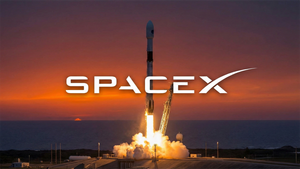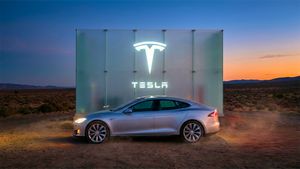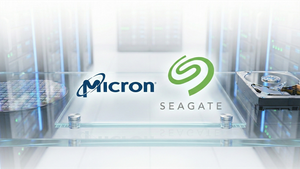
The global cattle feeding industry is at a critical juncture, facing mounting pressures from volatile feed costs, stringent environmental regulations, and a persistent labor crunch. In response, a wave of innovative technologies is rapidly transforming traditional practices, promising enhanced efficiency, sustainability, and profitability. This technological pivot, driven by advancements in Artificial Intelligence (AI), the Internet of Things (IoT), and precision agriculture, represents not just an operational shift but a fundamental redefinition of livestock management, with significant implications for public companies and financial markets.
This burgeoning trend is poised to reshape the agricultural landscape, offering solutions to some of the most pressing challenges confronting food production worldwide. The integration of smart systems, data analytics, and automation into cattle operations is moving beyond experimental phases, with early adopters demonstrating tangible benefits in feed optimization, animal health, and environmental footprint reduction. As these technologies mature and become more accessible, they are expected to drive a new era of productivity and resilience in a sector vital to global food security.
Precision Feeding and Smart Monitoring: The Core of the Transformation
The evolution of technology in cattle feeding is not a sudden event but a continuous progression driven by decades of agricultural innovation, accelerating significantly in the last five to ten years with the widespread adoption of digital tools. At its core, this transformation revolves around precision feeding and smart monitoring, enabled by AI and IoT.
AI-powered systems are now capable of analyzing vast datasets—including individual animal weight, age, breed, milk production, and even rumination patterns—to formulate and deliver precisely tailored feed rations. This level of individualization minimizes waste, optimizes nutrient intake, and can significantly reduce feed costs, which often constitute the largest operational expense for cattle producers. Companies like Cargill (NYSE: CARG) and ADM (NYSE: ADM), major players in animal nutrition, are heavily investing in and integrating AI-driven feed optimization into their offerings, often through partnerships or acquisitions of agritech startups.
Simultaneously, the Internet of Things (IoT) provides the sensory backbone for these intelligent systems. Smart collars, ear tags, and in-barn sensors continuously collect real-time data on animal health, behavior, and environmental conditions. These devices can track vital signs, detect changes in activity that might indicate illness, monitor heat cycles for breeding efficiency, and even manage grazing patterns using virtual fencing. For instance, companies like Allflex Livestock Intelligence (part of Merck Animal Health, NYSE: MRK) and Nedap N.V. (AMS: NEDAP) are leading providers of these advanced monitoring solutions. The immediate industry reaction has been one of cautious optimism, with large-scale producers and corporate farms increasingly exploring and adopting these technologies to gain a competitive edge and address labor shortages.
Companies Poised for Growth and Disruption
The technological revolution in cattle feeding presents a clear dichotomy of potential winners and losers in the financial markets. Companies specializing in agricultural technology, data analytics, and sustainable solutions are particularly well-positioned for significant growth.
Deere & Company (NYSE: DE), a titan in agricultural machinery, is expanding its precision agriculture offerings to include livestock management solutions, leveraging its established network and R&D capabilities. Similarly, Trimble Inc. (NASDAQ: TRMB), known for its GPS and mapping technologies, offers software and hardware that integrate data from various farm sensors, enabling comprehensive herd management and feed optimization. These companies stand to benefit from increased demand for integrated hardware and software solutions that streamline operations.
Biotechnology firms focused on animal health and nutrition also play a crucial role. Companies like Elanco Animal Health (NYSE: ELAN) and Zoetis Inc. (NYSE: ZTS) are developing feed additives and health monitoring solutions that complement precision feeding systems, aiming to improve animal welfare and productivity. Their research into methane-reducing additives and enhanced nutrient absorption technologies aligns perfectly with the industry's sustainability goals. Conversely, traditional feed suppliers or smaller, less technologically adaptive farms might face challenges. Those unwilling or unable to invest in these advanced systems could struggle to compete on efficiency and cost, potentially leading to consolidation within the industry. However, even traditional players like Tyson Foods (NYSE: TSN) and JBS S.A. (BVMF: JBSS3) are exploring these technologies to optimize their supply chains and meet evolving consumer demands for sustainably raised meat.
Broader Significance and Industry Transformation
This technological shift in cattle feeding is not an isolated event but a critical component of broader trends sweeping across the agricultural sector, particularly the drive towards sustainable agriculture and food security. As the global population grows and climate change impacts food production, optimizing resource use in livestock farming becomes paramount.
The move towards precision feeding and smart monitoring directly addresses concerns about environmental impact. By reducing feed waste, improving nutrient utilization, and potentially mitigating methane emissions through specialized diets and additives, these technologies contribute to a smaller carbon footprint for the livestock industry. This aligns with increasing regulatory pressures and consumer preferences for ethically and sustainably produced food. Governments and international bodies are also likely to introduce policies that incentivize such technological adoption, potentially through subsidies or carbon credits, further accelerating their integration.
Historically, agricultural revolutions have always been driven by technology, from the invention of the plow to the Green Revolution. This current wave can be compared to the mechanization of crop farming in the 20th century, which drastically increased efficiency and output. The ripple effects will extend beyond individual farms, influencing commodity markets by stabilizing demand for certain feed ingredients, impacting veterinary medicine through predictive health analytics, and even transforming labor markets as demand shifts from manual labor to skilled tech operators and data analysts. This transformation could also foster new partnerships between technology providers, animal health companies, and feed producers, creating a more integrated and data-driven agricultural ecosystem.
The Road Ahead: Opportunities and Challenges
Looking ahead, the short-term future will see continued investment in research and development, with a focus on refining existing technologies and making them more affordable and user-friendly for a wider range of producers. The integration of AI with advanced robotics for automated feed delivery and even animal handling is a significant short-term possibility. Pilot programs and early commercial deployments will expand, providing more data on ROI and best practices.
In the long term, we can anticipate a fully integrated, "smart farm" ecosystem where every aspect of cattle management—from genetics and breeding to feeding, health, and environmental impact—is monitored, analyzed, and optimized by interconnected AI and IoT systems. This could lead to entirely new business models, such as "precision livestock as a service" offerings. Market opportunities will emerge for data management platforms, specialized sensor manufacturers, and AI algorithm developers tailored for agricultural applications. Challenges will include the high initial capital investment for some technologies, the need for robust internet infrastructure in rural areas, and the ongoing demand for skilled labor capable of managing these complex systems. Cybersecurity will also become a critical concern as more farm operations become digitally connected. Potential scenarios range from widespread, rapid adoption driven by economic and environmental imperatives to a more gradual, segmented uptake influenced by regional policies and economic conditions.
A More Efficient and Sustainable Livestock Industry
The integration of advanced technology into cattle feeding represents a pivotal moment for the livestock industry. Key takeaways include the critical role of AI and IoT in driving efficiency, the immense potential for reducing environmental impact, and the creation of significant market opportunities for agritech and biotech companies. This shift is fundamentally altering how meat and dairy are produced, pushing the industry towards a more sustainable and economically viable future.
Moving forward, investors should closely watch companies that are innovating in precision agriculture, animal health tech, and sustainable feed solutions. The ability of these firms to scale their technologies, form strategic partnerships, and navigate regulatory landscapes will be crucial indicators of their long-term success. Furthermore, monitoring global feed commodity prices and evolving environmental policies will provide insights into the continued impetus for technological adoption. The cattle feeding market is undeniably moving towards a data-driven, technologically advanced paradigm, and those who embrace this evolution are best positioned to thrive in the coming decades.
This content is intended for informational purposes only and is not financial advice





